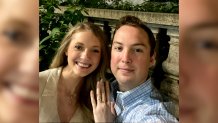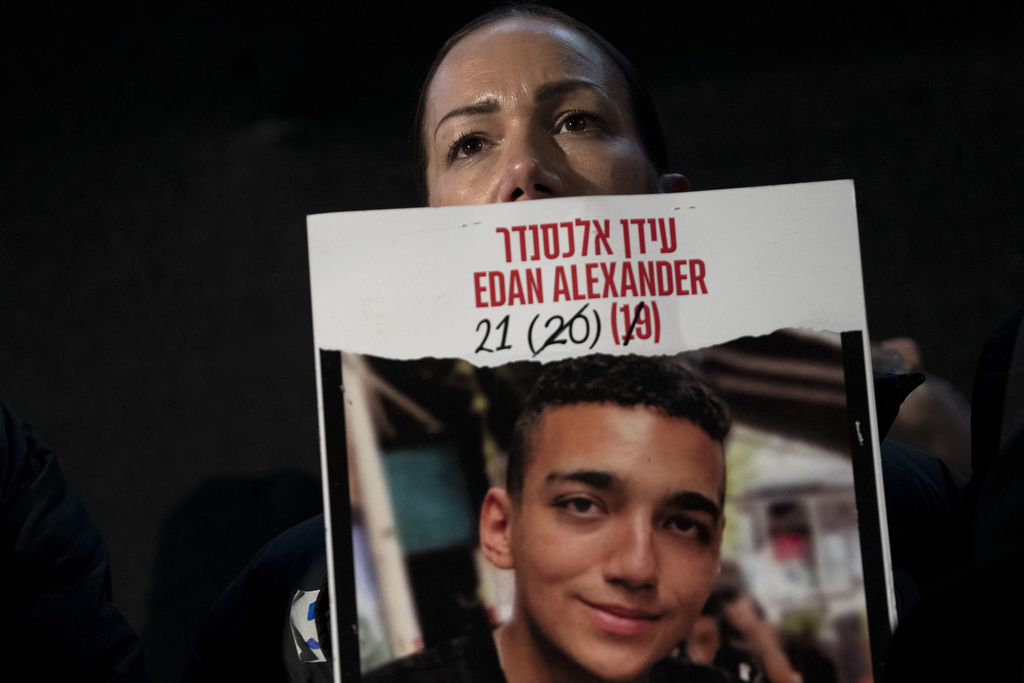Fatigue, memory loss, and anxiety are just a few lingering symptoms from the first encounter with COVID-19 in 2020 for NYC residents, Kevin Devine and Matt Boyd, who share their incredible stories of survival with NBC New York’s Linda Gaudino.
Fatigue, memory loss, and anxiety are just three of the lingering symptoms left behind from the first encounter with coronavirus in 2020 for New York City residents, Kevin Devine and Matt Boyd.
While these two both fought off the same virus, these patients experienced different excruciating symptoms and personal journeys seeking medical care.
Fifty-eight-year-old Devine is a father of two who lives on Staten Island with his wife Lori and daughter, Michelle, who is handicapped with Cerebral Palsy.
Watch NBC 4 free wherever you are
He first came down with COVID-19 during the first wave of the pandemic in March 2020.
Meanwhile, 32-year-old Matt Boyd found himself in a similar situation, first coming down with COVID in November 2020. The Lower East Side resident visited NYU Langone Hospital where his first rapid test came back negative.
Get Tri-state area news delivered to your inbox with NBC New York's News Headlines newsletter.

The Initial Diagnosis
News
At the time, Devine was working two jobs as a security guard at Madison Square Garden and a driver for the U.S. Postal Service. He recalls waking up every day feeling as if it were a horrible case of the flu. He coughed incessantly and drank suppressants "like it was water."
In the same vein, doctors first diagnosed Boyd with a sinus infection and gave him prednisone and antibiotics. Boyd describes the pain as feeling unusually hungover, "seeing stars" as if being repeatedly knocked in the head. Not only until days later did he test positive for COVID-19.
"Then the no sleeping started. Felt like I was burning all over. I was coughing so bad, I broke two ribs. This was after I left the hospital and I told them that I'd be back," said Boyd, who was again sent to the emergency room acting delirious with a blood pressure of 210 over 100.
Devine took himself to Staten Island University Hospital to receive a chest x-ray only to find out his stay there would last for months.
Life or Death Decision
Results from the chest x-ray stunned Devine, who describe the image as clouds of smoke filling his rib cage, which was hidden under black residue. The doctor immediately recommended that Devine be put on a ventilator, which to Devine, was almost a death sentence.
It was Thursday, he [the doctor] said if you don't go on a ventilator today, you will die by Sunday. Imagine somebody coming in and giving you that choice of life? Go on a vent or die -- but you know if you go on the vent you know you have a good shot of dying anyway.
Kevine Devine
Staten Island, N.Y.
Devine's oxygen levels dangerously plummeted to 60.
On the other hand, Boyd consistently felt burning sensations even after leaving NYU. Eventually, he was admitted again in December 2020 at Bellevue Hospital after a second round of coronavirus reached his lungs.
"All they cared about, especially back in 2020, was if your O2 was above 95, you were fine. They admitted me again, but they said it was for anxiety...I felt this burning sensation the whole time, felt like I was burning from the inside out," described Boyd who recalled sleepless nights writhing in bed.
Boyd was even told he may have bipolar disorder, which only added to the confusion at the time on what could have actually been the onset of long COVID.
A Long Hauler's Road to Recovery
Nurses TinaMarie Petrizzo, Annmarie Pucilla, and Janeen Abdeldayem were by Devine's side throughout the 46 days that he was in a coma on a respirator. In a retrospective study by JAMA, almost 90% of patients on a ventilator died in New York during the first wave.
"I couldn't close my jaw because my jaw was opened for so long with the vent -- I had lockjaw, so every day they had to push my jaw closed a little bit more," recalled Devine.

This Staten Island resident was later discharged in May and soon entered a long road to recovery where he had to learn how to walk, talk, and eat again, among other long-lasting physical and mental impacts of the virus.
For Boyd, his journey continued for months seeking various specialists, COVID clinics, and treatments -- anything to pinpoint someone who could understand what he was undergoing.
"I luckily found this doctor, Dr. David Lee, who was doing post-COVID research, and he told me not to give up. He said he knows what I'm experiencing is real and that he met dozens of patients like me," noted Boyd, who then joined NYU's long COVID program.
This story is part of a series, "Living with Coronavirus For the Long Haul," following long COVID experts and patients during the two-year pandemic anniversary. Watch episode one here.



